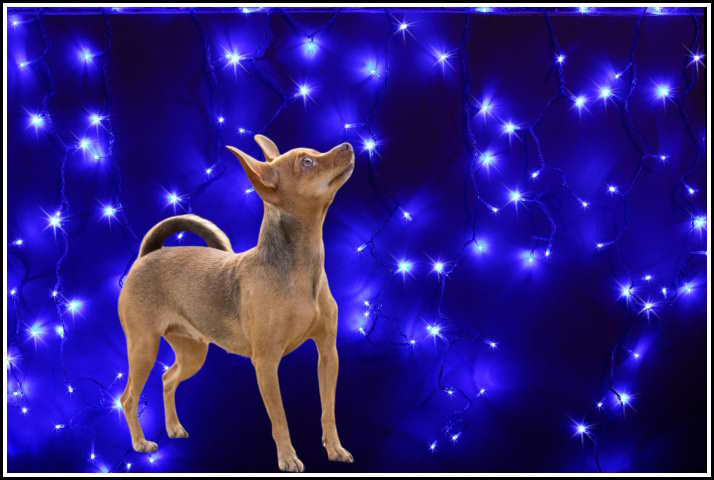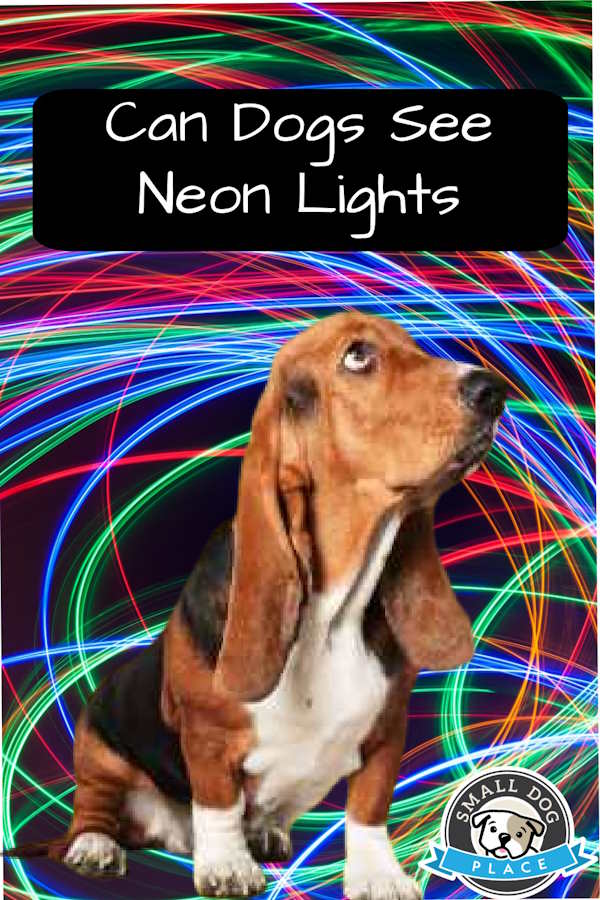- Small Dog Place Home
- Dog Senses
- Can Dogs See Neon Colors
Can Dogs See Neon Colors?
Can Dogs See Neon Colors? |Published 12-06-2023
Dogs' eyes, just like ours, are magical windows to the world. But, the view from their side of the window is slightly different. You see, while we have three types of colour receptors, our canine pals only have two. Imagine watching a slightly less colourful movie, and that's their daily reality.

Ever strolled down a neon-lit lane with your furry friend and wondered if they see the world just as brightly as you do? With the increasing popularity of LED neon lights, it might have crossed your mind: "Can my dog see these vibrant colours?" Let’s check the details. What Colors Can Dogs Actually See?
Ever heard that dogs only see in black and white? Well, that's a myth! Dogs do see colours, but not the rainbow we experience. Instead of the rich spectrum we see (red, green, and blue), they majorly perceive shades of blue and yellow. Red, for them, appears as a shade of gray. So, a neon red sign might not be as dazzling to them as it is to us.
The Science Behind Neon Lights
Now, neon isn't just a fancy name. Neon lights, especially LED neon lights, emit light when an electric current passes through them. It's kind of like how a rainbow appears after a storm, with electricity playing the role of rain.
To achieve the vibrant neon colours we associate with these signs, phosphor coatings are applied to the inner surface of the glass tubes. When electricity flows through the gas inside these tubes, it excites the phosphor coating, causing it to emit coloured light.
LED lights operate on a different principle. They produce light when an electric current passes through a semiconductor material. LEDs are highly adaptable and can be engineered to emit light in a multitude of colours, including those reminiscent of neon shades.
How Dogs Perceive LED Neon Lights
Given their limited colour perception, it is unlikely that they see neon colours in the same way humans do.
While neon signs and LED neon lights may appear vibrant and captivating to us, dogs are more likely to see them as shades of blue and yellow, with minimal differentiation between the brilliant neon hues.
To dogs, neon pink might appear as a shade of blue or gray, neon green could resemble a variation of yellow, and so on. However, you need to know that dogs rely on their other senses as well, especially smell and hearing to interpret the world.
Their vision is adapted for low-light conditions and motion detection, making them skilled hunters and trackers. While they may not appreciate the aesthetic beauty of neon colours, dogs excel in other aspects of visual perception that are vital for their survival and daily activities.
Other Animals and Neon Vision
Isn't it interesting that not just dogs, but many animals perceive colors differently? For instance, birds can see ultraviolet light, a spectrum of light invisible to our eyes. Ultraviolet vision has been studied in insects, particularly bees and butterflies.
It's like birds having their own VIP neon light show, while we're still waiting in line. It's difficult to image the type of colors birds, insects and others are capable of seeing.
Do Neon Lights Harm Dogs?
Good news, pet owners! There's no evidence to suggest that neon lights, especially LED neon lights, are harmful to dogs. LED signs don’t have mercury inside, produce less heat and are low voltage, which makes them even safer. It's like having a disco party with your dog, and both of you enjoy the light show without any worries.
Practical Tips for Pet Owners
If you're thinking of decorating your space with LED Neon lights and are a pet owner:
- Ensure the wires and fixtures are out of your pet's reach.
- If your dog seems uneasy around the lights, consider reducing the brightness or changing their location.
Myth Busters: Canine Vision
Myth: Dogs only see in black and white.
Reality: Dogs can see colours, primarily blue and yellow.
Myth: Bright lights can damage a dog's eyes.
Reality: There's no concrete evidence to suggest LED Neon lights harm canine vision.
So, while neon colours and LED lights may dazzle human eyes, dogs perceive them quite differently due to their dichromatic vision. These vibrant hues likely appear as various shades of blue and yellow to our canine companions. So, next time you buy neon signs, consider choosing the ones that have blue or yellow hues.
Can Dogs See Neon Colors?
Pin for Future Reference

About Janice (author and voice behind this site)
Having lived with dogs and cats most of her life, Janice served as a veterinary technician for ten years in Maryland and twelve years as a Shih Tzu dog breeder in Ohio.
Her education includes undergraduate degrees in Psychology with a minor in biology, Early Childhood Education, and Nursing, and a master's in Mental Health Counseling.
She is a lifelong learner, a dog lover, and passionate about the welfare of animals. Her favorite breed for over 50 years has been the Shih Tzu, but she has also lived with Poodles, Maltese, Yorkshire Terriers, Beagles, English Bulldogs, Carin Terriers, and a Cocker Spaniel.
When not writing, reading, and researching dog-related topics, she likes to spend time with her eight Shih Tzu dogs, husband, and family, as well as knitting and crocheting. She is also the voice behind Miracle Shih Tzu and Smart-Knit-Crocheting
Does This Article Deserve Your Thumbs Up?
We always appreciate your support and encouragement. Your thumbs up means so much to us. Please like this article.
If you find this page or any page on Small Dog Place Helpful, or useful in anyway, I'd love it if you would click the small heart found on the bottom right of each page.
You can also share or bookmark this page -- just click on the:
Your second block of text...

Free Monthly Newsletter
Sign Up for Our Free Newsletter and get our Free Gift to You.
my E-book, The Top 10 Mistakes People Make When Choosing a Dog (and how to avoid them)

